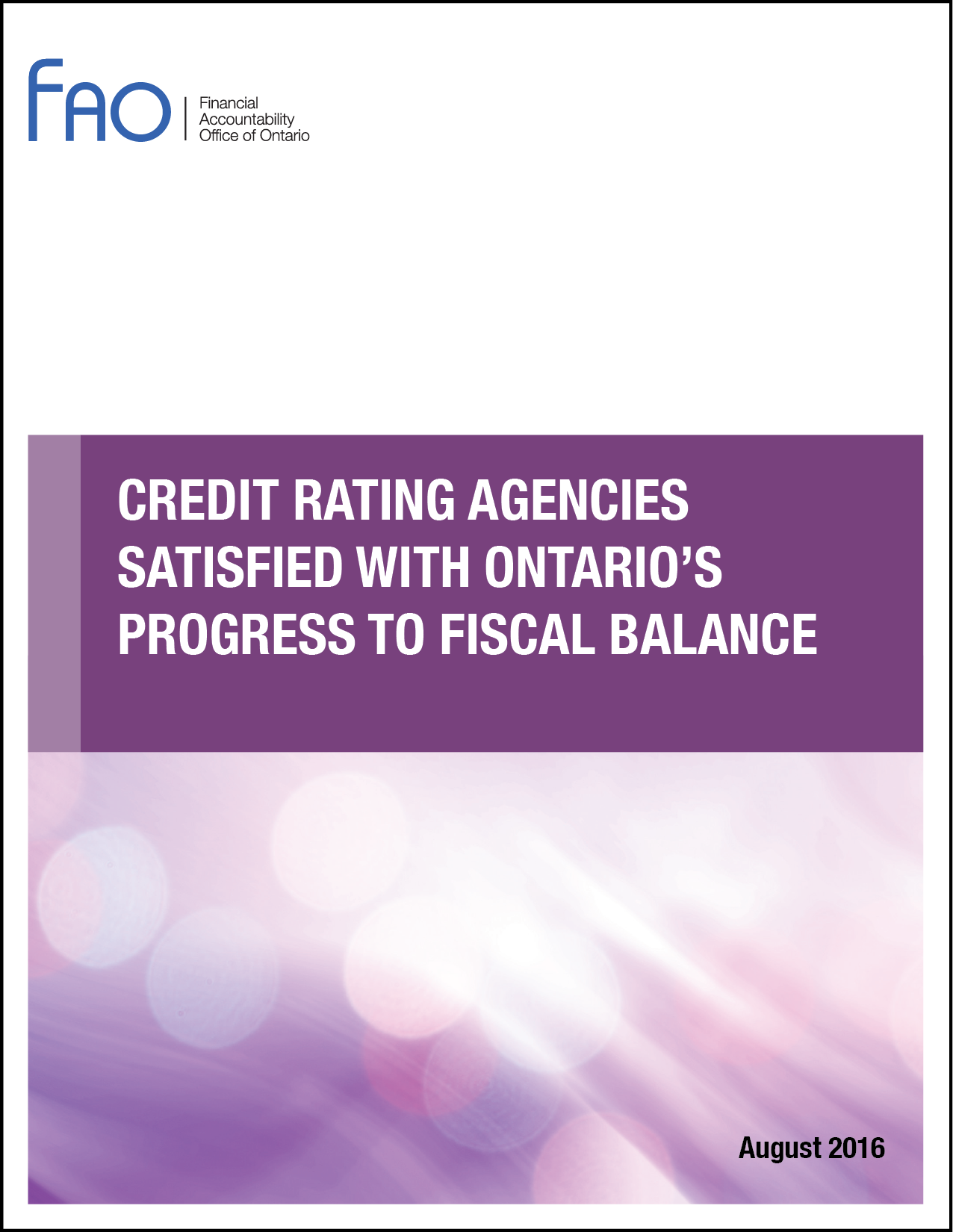Credit Rating Agencies Satisfied with Ontario’s Progress to Fiscal Balance

This note provides a summary of Ontario’s current credit ratings as well as some general background on the significance and implications of credit ratings.
Credit Rating Agencies Satisfied with Ontario’s Progress to Fiscal Balance, Financial Accountability Office of Ontario, 2016.

